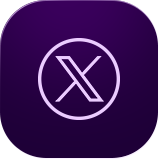Derivatives are an important part of the cryptocurrency market. One of the most popular derivatives is futures trading. Investors use futures in order to profit not only with the price of a virtual currency going up, but also with the price of a digital asset falling. Furthermore, futures trading allows traders to use leverage to gain more exposure to the market.
What Are Derivatives And Futures? #
Derivatives are financial products or contracts that derive their price from other assets. As you can see, the word “derivative” comes from the world “derive,” which means that the financial products are simply contracts that are based on a certain asset.
Imagine you and your friends are trading the price of gold in a market. A month later, an outbreak makes it impossible to travel and attend the market. Since you still want to trade the price of gold, your broker tells you that we can make a financial product called Xgold.
Xgold will be a contract agreement that states that 1 Xgold will be equal to 1 ounce of gold. This will mean that Xgold will be pegged to the price of gold, it goes up and down based on the price of gold.
Now, instead of having to go to the market and buy and sell the gold physically, you can simply buy the Xgold contract and still be exposed to the price of gold. Should you decide to buy the actual gold in the future, you can simply swap it or convert to cash then buy gold.
Traditionally, financial assets make you profit when they go up in price. With derivatives, you can also make money when the price goes down.
Futures Contracts #
Futures are just one of the different derivatives currently available in the market. However, trading futures can be defined as gambling at its best.
Traders of futures markets are not handling the digital currency they have acquired, but instead, they are handling contracts. These contracts can have a quarterly expiration period or they could simply be perpetual contracts that can be bought and sold at any moment in time.
Futures allow traders to long or short the price of the underlying asset, for example, Bitcoin.
Shorting & Longing #
Shorting an asset means a trader is going to be betting against the price of an asset going up. Short positions will be profitable if the price of a cryptocurrency falls.
For example, if you believe that Bitcoin is going to be moving downwards in the next 24 hours, you can open a short position. If the market moves down, then you will be profiting from it. This is one of the best things about futures markets, traders can profit from both markets moving higher and also lower.
The same can be done when we open a long position in the market. The main difference is that instead of profiting when the market falls, the trader will receive the profits once the virtual currency they are trading moves higher.
If you believe Bitcoin is going to be moving higher in the next hours, then you can open a long position. This long position will be opened as long as you desire if the price of Bitcoin moves higher. By opening this long position you will be profiting with the price of Bitcoin moving higher.
Trading With Leverage #
Futures trading allows users to trade with leverage. Basically, you are going to be borrowing funds in order to increase your exposure to a specific trade. When you open a leveraged position, you will need collateral to keep the position open.
For example, if you have 100 USDT, you can trade with 10,000 USDT (100x leverage), which will make it much more profitable if you properly understand where the market is moving (if higher or lower). If you use a 50x leverage, then you will have 5,000 USDT to trade with your collateral being only 100 USDT.
Exchanges such as Binance allow you to trade with a wide range of assets and digital currencies. You can improve your trading skills and profits by using different virtual currencies according to your needs.
Leverage trading can be very risky considering that the crypto market is very volatile. This is why it is important to use stop-loss orders to reduce your risk of being liquidated.
If you are using 100x leverage, then you can be liquidated in just seconds. If Bitcoin’s price moves only $1 (in this example), then your position will be closed and you will lose all your funds.
The lower the leverage, the lower will be your chances of avoiding liquidation. As we mentioned before, the best thing to do would be to have a tight stop-loss order to protect your funds and avoid being liquidated.
Limit Orders #
Limit orders are one of the most used orders in the cryptocurrency market. You can define the price at which you want to buy or sell Bitcoin or any other virtual currency. Let’s say you want to open a long position in Bitcoin only if the price hits $10,000. If the market falls to $10,000, then your limit order will be filed and you will have the Bitcoin contract you wanted to buy. The contrary will happen if you short the market. You can select the amount of BTC you want to short and you can select the price at which you want the order to be executed.
Market Orders #
Market orders will allow traders to buy or sell a contract immediately and at the best price available in the market. No matter if you go long or short, the order will get filled immediately at the market price at that moment. You will not have to wait before it gets executed like the limit order.
Stop Limit And Stop Market Order #
Stop limit orders are a mixture of a trigger condition and a limit order. This feature is for risk management. Traders will be combining a stop and a limit order.
Let’s say that you have an open long position in the market. If you want to reduce your risk and manage it better, you can select a price at which your position will get automatically closed. This would reduce your losses and help you maximize your earnings.
If we were longing Bitcoin at $10k, then we can open a stop-limit order at $9,500. If the price falls to $9,500, then your position will get closed and you will not continue losing money. The contrary will happen in a short position. If we shorted at $10k, we can set up a stop-limit order at $10,500 to reduce our risk if the market moves in the contrary direction.
The difference between the stop-limit order and the stop market order is related to the price at which the order you opened will get executed.
While the stop-limit order will get executed at a specific price you decide, the stop market order will be executed at the best available price once the price trigger you selected is reached. The best available price makes reference to the price at which the asset is being traded at the time of executing the order. Order books in large exchanges have large liquidity and tight spreads.
That means that market orders are going to be more accurate than in exchanges and platforms with lower liquidity. If you want to sell 1 BTC in a market with enough liquidity, then the BTC you sell will be valued at the best available buying offer waiting in the order book. The same will happen if you want to buy 1 BTC; you will pay the lowest price offered by a Bitcoin seller in the order book.
Trailing Stop Loss #
Trailing stop loss is a great tool for traders that do not want to lose momentum in the cryptocurrency market. Traders will be able to select a percentage of loss once a certain price is reached.
The trailing starts making effect once a specific price set by the trader is reached. If we are long and the market continues moving higher, the trailing stop loss will rise in our favor and the stop price will also be updated. Once the price reverses, then the stop will remain open and it will get executed if the market reaches that price.
How To Find Easy Shorts? #
Traders want to search for opportunities in the market. This is why we have created a course at SoftVenix Academy for that. One of the best ways to find short opportunities in the market is by looking at the coins that have been very bullish in the last few hours or days.
You can go to CoinMarketCap, check the coins that have grown the most and search for them on your futures trading platform. It can be Binance or any other exchange that offers crypto derivatives. Binance itself is also showing the top gainers and losers in the last 1 hour and also in the last 24 hours.











